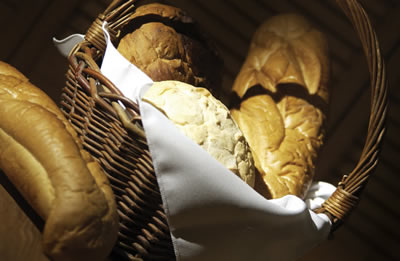In the Reign of God, even mild violence won't do.
...so while reclining next to Jesus, Simon Peter asked him, "Lord, who is it?" Jesus answered," It is the one to whom I give this piece of bread when I have dipped it in the dish." So, when he had dipped the piece of bread, he gave it to Judas, son of Simon Iscariot. After he received the bread, Satan entered into him. Jesus said to him, "Do quickly what you are going to do."..."
John 13:25-27
 Lordship looks very different where the reign of God is present. This brief encounter at the Last Supper follows immediately after Jesus has washed the feet of his disciples, including the feet of Judas, son of Iscariot! Though not specifically stated in the text, Jesus surely knew Judas' intent, even as the Lord undid his robe and tied the towel around himself. Before sending Judas away, Jesus is Judas' foot-washing servant!
Lordship looks very different where the reign of God is present. This brief encounter at the Last Supper follows immediately after Jesus has washed the feet of his disciples, including the feet of Judas, son of Iscariot! Though not specifically stated in the text, Jesus surely knew Judas' intent, even as the Lord undid his robe and tied the towel around himself. Before sending Judas away, Jesus is Judas' foot-washing servant!
Knowing Judas' intent, a more sane action by Jesus would have been to inform the disciples, surround the scoundrel, and have Judas bound and gagged, if not something even tougher! This would certainly delay-maybe even stop outright--the evil that will befall Jesus in the hours and days ahead.
But in the Reign of God, even mild violence won't do. We can't read Jesus' mind, but later actions would suggest he was thinking, "Do what you must, Judas, and I shall meet evil head-on in another way."
Thus, the prophecy of Isaiah that the Messiah shall be a suffering servant will be fulfilled. Evil intent and betrayal is countered with servanthood-humble servanthood--and faithful obedience, even obedience that leads to a cross. Not only does Jesus not enlist his disciples in some preventative action on the betrayer in their midst, he will not even call upon the Legions of Angels as he is arrested, brutalized and finally killed.
Dare we say that Jesus' way of dealing with evil and betrayal has been vindicated, in that over 2,000 years later, the church of Christ again prepares to wash feet, share a meal, walk to the cross, and celebrate an empty tomb?
Indeed, Lordship looks very different where the Reign of God holds sway! Love conquers hate. Good shall overcome evil. The light shines, and the darkness shall not overcome it. Thanks be to God!
O Christ, what can it mean for us to claim you as our king?
What royal face have you revealed whose praise the church would sing?
Aspiring not to glory's height, to power, wealth or fame,
you walked a diff'rent, lowly way, another's will your aim.
Though some would make their greatness felt and lord it over all,
you said the first must be the last and service be our call.
O Christ, in workplace, church, and home, let none to power cling;
for still, through us, you come to serve, a diff'rent kind of king.
O Christ, What Can It Mean for Us
ELW #431
Dufner, OSB, b.1939
Pastor Dan Bollman
--Assistant to the Bishop












 Lordship looks very different where the reign of God is present.
Lordship looks very different where the reign of God is present.